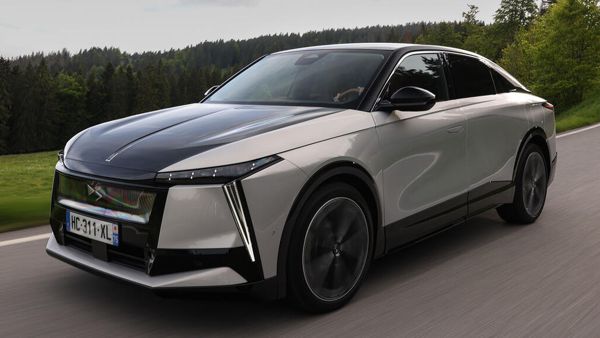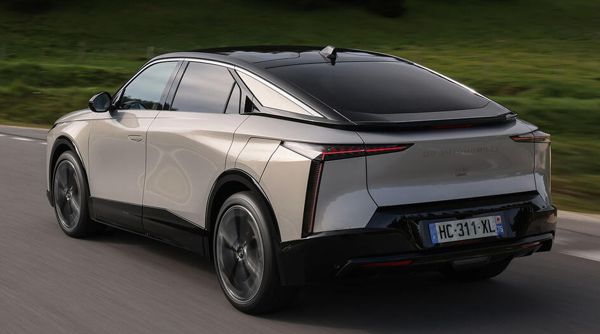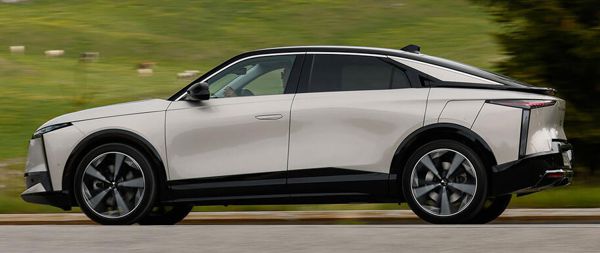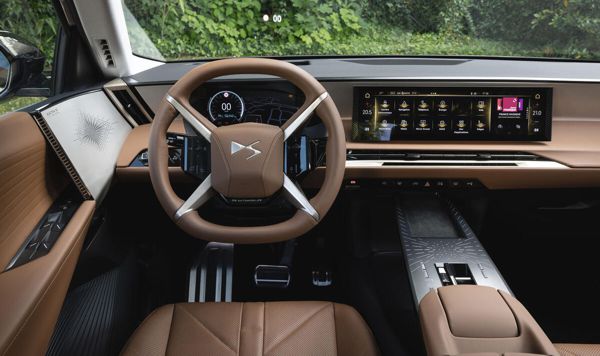Published
on 27
Jun 2025
|
All rights reserved.
|
|
|

|
|
The
No8 looks quite like a 3/4-scale Rolls-Royce, delivering the same road
presence and substantial perception...
|
|
Originally a sub-brand of
Citroen when the first DS3 was introduced in 2009, the DS brand has
spent the past 16 years trying to grow itself into a luxury brand.
Unfortunately, so far there is little success to talk about. Global
sales peaked at 130,000 units in 2012 (mostly thanks to the DS3), then
dwindled to 50,000 in recent years. It withdrew from China while
expansion to US remains a distant dream. The 50,000 sales spread across
4 models, i.e. 3 (supermini hatchback), 4 (compact hatchback), 7
(mid-size SUV) and 9 (large saloon), so you can see how much money it
is losing. How much extra sales the new No8 will bring remains to be
seen, but personally I am not too optimistic about the long-term
prospect of DS. Maybe Stellantis will make the final decision soon…
Anyway, the new No8 is a good and desperately needed attempt to break
the brand’s adverse cycle. DS really needs a fresh, mold-breaking yet
solid product to catch the attention of car buying public. From what we
see, the No8 deserves a chance.
French luxury cars usually decline to follow the pattern set by the
rest of the world. From the original 1955 Citroen DS to CX to XM, from
Renault 25 to Avantime and Vel Satis, many of them are unconventional
and hard to be classified. The no8 is no exception. While the firm
calls it a Coupe-SUV crossover, it has little in common with either.
Sure, the car is built on the Stellantis STLA Medium platform which is
shared with Peugeot 3008 and Citroen C5 Aircross, among others, but it
is
engineered more like a conventional luxury saloon, having absolutely no
offroad potential despite the tall-looking and high-riding appearance.
In fact, at 1580mm tall, it is just a smidge (7mm) taller than a
Rolls-Royce Spectre electric coupe. Its 0.24 drag coefficient is
identical to that of Mercedes C-class saloon, which would have been
impossible if it was really an SUV or a Coupe-SUV.

|
|
Drag
coefficient is just 0.24, boosting mileage at the cost of rear
headroom...
|
|
I mention Rolls-Royce Spectre because the No8 looks quite like a
3/4-scale Rolls-Royce, delivering the same road presence and
substantial perception. That prominent and vertical nose, that high arc
waistline, that relatively shallow greenhouse and that two-tone paint
scheme have strong similarities to the design language of Roll-Royce.
Maybe its designers deliberately did so to make a luxury car statement?
Meanwhile, the sharp design elements like taillights have some Lexus
design theme in them. Is it good looking? No, of course not, but it
does deliver a strong sense of occasion, just like a Rolls-Royce.
The No8 is hard to classify. At just over 4.8 meters long and 1.9
meters wide, riding on 2900mm wheelbase, it rests between D-segment
(e.g. BMW 3-Series) and E-segment (5-Series). It is a full electric
car, yet prices start from just over £50,000 and top out at
£63,000 for twin-motor AWD model, which is quite a bargain. It
slots among the D-segment premium cars for cost but offers the luxury
features of E-segment cars. It may compete with German premium brand’s
electric SUVs like Audi Q4 etron and Q6 etron but also the more
conventional saloons like 3-Series and A5. This isn’t a car defined by
conventional hierarchy.
Its technical design is pretty straightforward. The battery is
conventional 400V and placed under the floor between axles. Standard
battery size is 74kWh, coupled to a front-mounted motor offering 245 hp
or 260 hp on short burst of overboost. It tops 118 mph (all models are
restricted to that speed) and takes 7.3 seconds to go from rest to 60
mph. Certainly no fireball, but the power delivery is very smooth and
the availability of one-pedal driving mode is useful. The powertrain
feels refined and well matched to the car’s luxury intention. Moreover,
the low drag and standard heat pump help the base car to achieve WLTP
range of 342 miles (550 km), very good.

|
|
Impeccable
refinement and ride comfort; handling better than expected.
|
|
But even more impressive is the long-range battery model, which lifts
battery capacity to 97.2kWh and motor output by 15 hp (or 20 on
overboost). The latter is just enough to compensate for additional
weight, so it is no quicker, but the key point is a class-leading range
of 466 miles (750 km), which is one of the biggest selling points of
the car. Meanwhile, AWD model adds a rear motor to the long range
battery for a total output of 350 hp (or 375 hp on overboost),
improving 0-60 mph to 5.1 seconds while returning a respectable range
of 413 miles (664km). With long range battery, you are unlikely to have
range anxiety.
Charging is a bit slow though with 160kW capability. It takes 27-30
minutes to charge from 20-80 percent – note that Stellantis quotes
20-80 percent instead of the industrial norm of 10-80 percent, a
testament to its slowness.
Like other STLA Medium platform siblings, the No8 rides on MacPherson
struts up front and multi-link axle at the back. Top “Etoile” trim adds
adaptive dampers with active scan, which uses camera to scan the road
ahead to adjust the suspension in advance. Otherwise, its mechanical
aspect is totally conventional.
With active scan suspension, the ride cossets, especially on rough
surfaces where it soaks up bumps and potholes with ease. However, even
the passive suspension rides more smoothly than the class norm thanks
to its longer travel and softer setup. In corners, the car certainly
rolls more than a German premium car, but not as much as you might
think. It gives up grip earlier but understeers little. It is easily
more composed and surefooted than most SUV crossovers. Predictably, the
steering delivers little feel, but it is light, precise and linear. The
brake pedal is surprisingly well calibrated, blending regenerative and
frictional braking smoothly. In short, the chassis is surprisingly
polished, even though it is no driver’s car.
 |
|
French
luxury is obvious here...
|
|
However, the most impressive is refinement. The big DS feels most at
home in high-speed cruising, where it is remarkably smooth and quiet.
Wind and road noise are minimal, allowing you to enjoy the luxury
driving environment…
The cabin is not as spacious as you might think from outside. As the
floor level elevates to accommodate battery and the roof is set
relatively low and slopping to cut drag, headroom is not too generous,
especially at the back seat. If you are 6ft 2 or 3in, you are likely to
find your head uncomfortably close to the roof liner, although
panoramic glass roof does deliver an airy ambience. Rear legroom is
also a little tighter than some rivals, especially as there is no room
left under the front seats for your feet. Up front, you sit higher than
conventional saloons for a commanding view on the road and the car’s
long bonnet.
The interior design looks stylish, unconventional and, most important
of all, luxurious. The materials are high-quality (mostly), with soft
Nappa leather or Alcantara trims, brushed metal in various locations
(including classy speaker grilles at door panels) and ambient lighting.
You can pick some cheaper plastic switchgears from Stellantis’ parts
bin, but that is to be expected for its bargain prices. The
infotainment touchscreen is responsive and intuitive enough, although
its thin landscape shape does no favour to display sat-nav map. On top
trim, the leather seats have heating, cooling and massaging.
As a whole, the DS No8 is a different take on luxury motoring, more
comfort and style-oriented than the German norm, far more flamboyant
than Swedish offerings. Its biggest selling points are impeccable
refinement, luxury interior and class-leading battery range, all packed
with a relatively low price. It deserves more success than the other DS
cars.
|
Verdict:     |
|